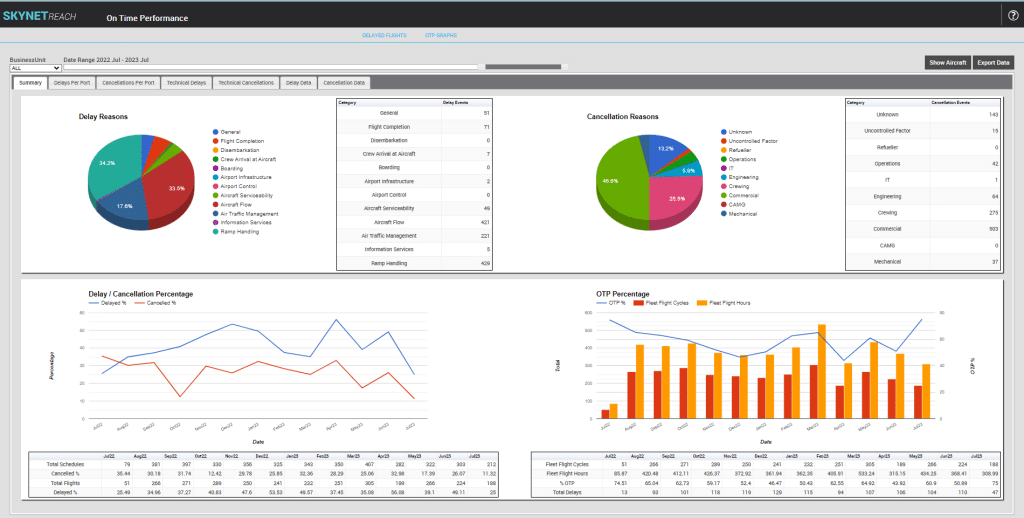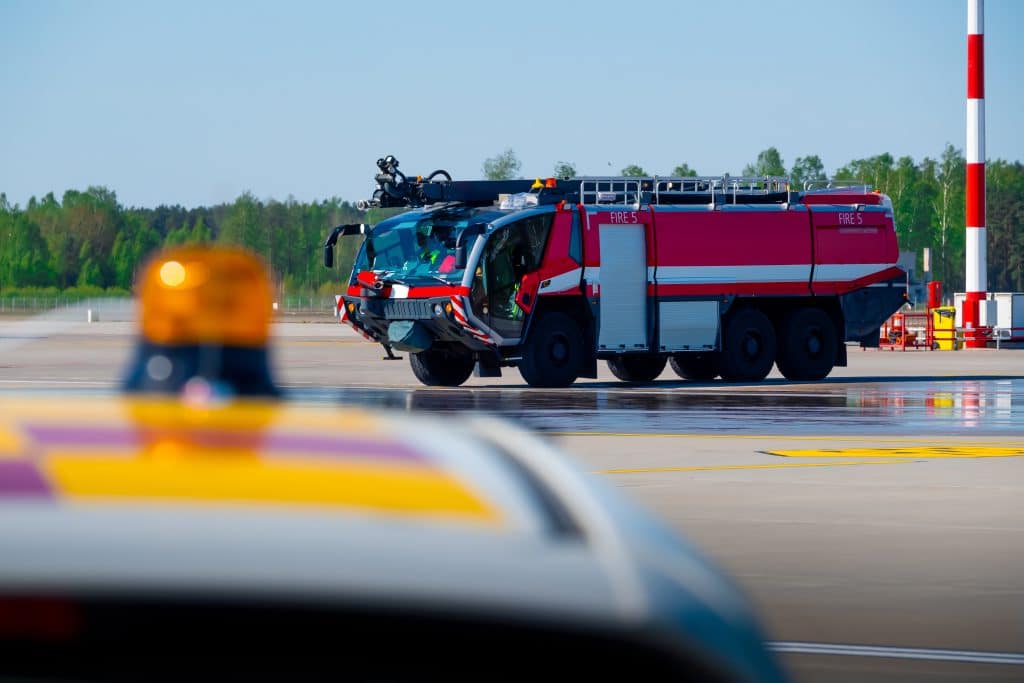The public ADS-B network has revolutionised how aviation tracks flights. That’s not to say it’s without limitations. What are those limitations, you ask? This article intends to answer that question and more.
Here’s a primer on ADS-B: what it is, how it works, and how a commercial ADS-B network can benefit your aviation company.
What is ADS-B?
ADS-B stands for Automatic Dependent Surveillance Broadcast. It’s a flight tracking system that uses an aircraft-mounted transponder that is fed basic flight status data direct from the avionics. This simple data is continually broadcast and is picked up by ground receivers (and, less commonly, by receivers on other aircraft – typically airliners). This reporting can happen in intervals of as little as 1 second.
From there, the ground receivers send the flight information over the internet to various software platforms such as FlightAware and FlightRadar24. These platforms facilitate the data’s use in building an accurate representation of airspace.
ADS-B doesn’t depend on radar. It also doesn’t require the use of interrogation signals on the ground. It’s consistently on and consistently broadcasting.
How commercial ADS-B differs from public ADS-B?
Public ADS-B is a network of decentralised ADS-B receivers that gathers and uploads the data of all ADS-B transponder signals within range. It remains the most common form of ADS-B use. It is quite reliable and offers a lot of redundancy in built-up areas. However, there are certain missions it simply hasn’t been designed for:
- Away from the cities, the public ADS-B network has a lot of gaps – it only extends as far as there is a general public reason to install a receiver. If you fly in remote areas, you are likely to encounter an ADS-B gap even in the most advanced countries.
- The receivers are not owned, maintained or controlled under service-level agreements – meaning individual receivers are regularly taken offline without warning. If this happens to a receiver an operator had been relying on, there is virtually nothing they can do.
Both problems can be addressed with the implementation of commercial ADS-B.
Under commercial ADS-B certain strategically placed ADS-B receivers are installed and managed by an aviation company, organisation or a service provider who offers their subscribers exclusive access to the receiver data.
Commercial ADS-B receivers don’t broadcast data to the public network. This means the aircraft movements they receive are only reported to those authorised to access that commercial network.
It also means that commercial ADS-B solutions can be implemented in places that the public network might never cover.
Because the commercial network goes where the clients needs it, it’s able to fill in the gaps left by the public ADS-B network and deliver far greater reliability and reach when it does. How? Simply because the receiver is continually monitored and managed. A typical example of this is a commercial ADS-B receiver placed on an offshore oil rig to monitor helicopter movements.
Commercial ADS-B extends what’s great about the public ADS-B network, and then improves on the range, service quality and service location limitations.
How commercial ADS-B performs better than free contributor networks
All ADS-B networks rely on software to capture, decode, integrate and display signals gathered by the receivers. Two of the most popular software packages that do this for public ADS-B are FlightAware and FlightRadar24 – both are currently free access contributor networks.
While FlightAware and FlightRadar24 are excellent tools, they’re limited by the public contributor ADS-B network they rely on.
Public ADS-B is built around a public, decentralised network of ground stations. This is a great solution for flights that don’t deviate from conventional flight paths over locations where public ADS-B infrastructure is plentiful.
Many regular public transport aviation companies and flight schools get by absolutely fine on the public ADS-B network. They can do this because there are so many public ADS-B receivers in their areas of operation. In this situation, the coverage of all the receivers overlaps and limited (or no) quality of service and reliability from any individual receiver doesn’t disable the network.
Operators that often fly through airspace that has little to no public ADS-B network coverage — particularly offshore charter, oil and gas, emergency services, aeromedical and search and rescue — face major issues, including availability and reliability, when trying to access the benefits of ADS-B.
At present, flights that pass through areas not covered by the public ADS-B network are typically monitored in two ways:
- Algorithmic: dead reckoning or a navigation vector using flight speed, scheduled flight paths and projected altitude to estimate the aircraft’s position
- Satelite: the aircraft switches to satellite communications for the duration of its flight through the ADS-B dead zone.
Both of these solutions have their downsides. Flight path projections or dead reckoning can fail when pilots deviate from their flight paths and satellite communication is a top-tier solution but it comes with a top-tier price tag for equipment and airtime costs.
Now, because commercial ADS-B receivers are placed where an operator specifically needs them there are no “gaps” in the network. At SkyNet, our commercial ADS-B network is also a managed service: it is constantly monitored for performance issues, meaning users have an assurance of maximum uptime, reliability and availability.
FlightAware and FlightRadar24 are great products for flight tracking, but you wouldn’t rely on them as flight safety management tools without a quality of service standard. What it all means is the limitations of the public ADS-B network are simply too sizeable to provide a consistent solution for specific aviation operators.
Commercial ADS-B – take a closer look
ADS-B as a technology has changed the way we track flights for the better. The public ADS-B network is an excellent resource, but it’s not without limitations. Luckily, those limitations can be nullified by the implementation of a commercial ADS-B solution.
Want to learn more about how commercial ADS-B could be the solution for you? Get in touch today and see how SkyNet can meet your aviation needs.



